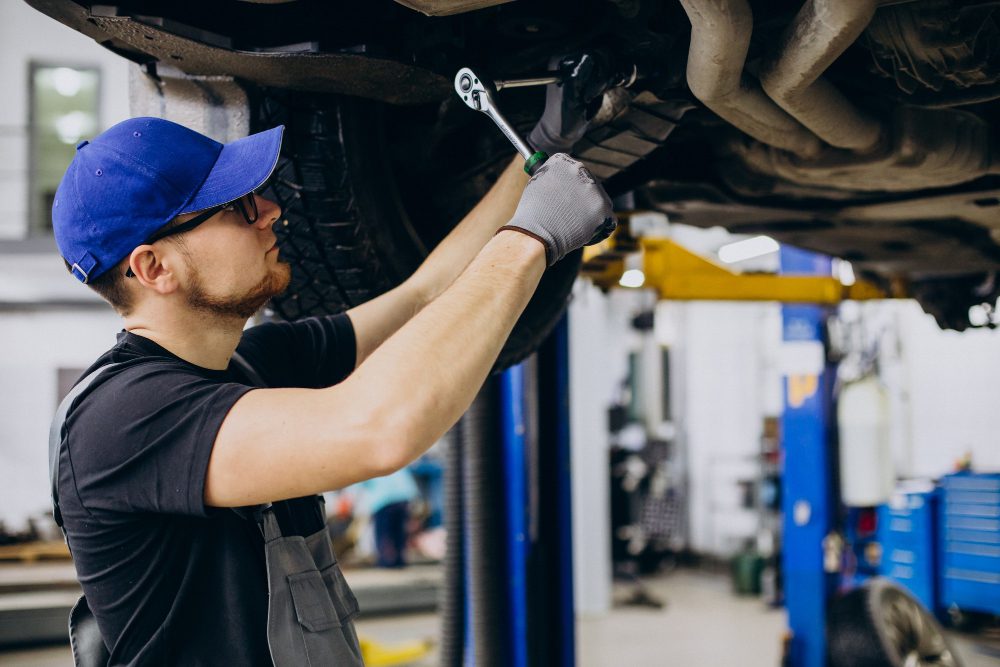What are the three levels of safety controls?
Safety controls play a crucial role in ensuring the well-being and protection of individuals in various environments. Whether it’s in the workplace, at home, or in public spaces, implementing effective safety controls is essential to prevent accidents, injuries, and potential hazards. There are three primary levels of safety controls that are commonly used to manage risks and maintain a safe environment. These levels include administrative controls, engineering controls, and personal protective equipment (PPE). Each level has its own unique purpose and can be used independently or in combination with others to enhance safety measures.
Administrative Controls
Administrative controls are policies, procedures, and protocols put in place to regulate and manage potential hazards. These controls focus on changing human behavior and can include things like training programs, signage, warning labels, and security measures. They aim to create awareness, educate individuals on potential risks, and establish guidelines for safe practices. Administrative controls are an important foundation for maintaining safety, as they set the standards and expectations for how individuals should conduct themselves in different situations.
Engineering Controls
Engineering controls involve physical modifications and adjustments made to the environment to eliminate or reduce potential risks. These controls are designed to provide a barrier between individuals and hazards and typically require minimal input from individuals themselves. Examples of engineering controls include installing guardrails, improving ventilation systems, implementing noise control measures, and utilizing machine guarding devices. These controls are particularly effective in industrial settings where machinery and equipment pose potential risks to workers.
Personal Protective Equipment (PPE)
Personal protective equipment (PPE) refers to specialized clothing, gear, or equipment worn by individuals to protect them from specific hazards. PPE acts as a physical barrier to prevent direct contact with potential dangers and can include items such as helmets, gloves, safety glasses, respirators, hearing protection, and hi-vis vests. PPE is often used as a last line of defense when administrative and engineering controls are not sufficient to eliminate or reduce risks. It is crucial that PPE is properly selected, fitted, and maintained to ensure its effectiveness in safeguarding individuals.
What are the three levels of safety controls?
Subsection: What is the difference between safety 1 and 2?
In the world of safety controls, it is important to understand the differences between Safety 1 and Safety 2 approaches. While both aim to promote safety in the workplace, they have distinct characteristics and strategies.
Safety 1: This approach focuses on identifying and preventing negative outcomes or accidents. It emphasizes compliance with rules, regulations, and procedures, as well as the investigation of incidents to prevent their recurrence. Safety 1 is reactive, aiming to reduce errors and failures through inspections, audits, and corrective actions.
Safety 2: In contrast, Safety 2 is proactive and forward-thinking. It acknowledges that complex systems can adapt and learn from success and not just failure. Safety 2 aims to enhance resilience and create systems that can withstand unexpected events and recover quickly. It emphasizes the importance of learning from successes and encourages flexibility, innovation, and active participation from employees in identifying and managing risks.
According to renowned safety expert Erik Hollnagel, Safety 1 and Safety 2 can be seen as two sides of the same coin. He suggests that organizations should adopt a “Safety Duality” approach, combining the strengths of both approaches.
Key differences between Safety 1 and Safety 2 include:
- Safety 1 focuses on avoiding failures, while Safety 2 focuses on enhancing system performance.
- Safety 1 is more prescriptive, relying on regulations and established procedures, while Safety 2 promotes flexibility and adaptability.
- Safety 1 views incidents as problems to be eliminated, while Safety 2 sees them as opportunities for learning and improvement.
In the words of Sidney Dekker, a leading authority on safety, “Safety 1 is about ‘how things went wrong,’ while Safety 2 is about ‘how things go right.'”
Safety 1 focuses on the prevention of adverse events, while Safety 2 is about building systems that are able to create successes even when unforeseen challenges arise.
By understanding the differences between Safety 1 and Safety 2, organizations can develop a more comprehensive approach to safety, integrating both reactive and proactive measures. This balanced approach can lead to a safer workplace with enhanced resilience and continuous improvement.
In conclusion, while Safety 1 aims to prevent failures through compliance and investigation, Safety 2 takes a more proactive and adaptive approach. Embracing both approaches will help organizations achieve higher levels of safety and performance.
What is Safety Level 2?
Safety Level 2 is the second level of safety control in the three-tiered safety system. It is designed to provide additional protection and mitigate potential hazards in various environments and industries. While Safety Level 1 focuses on basic safety measures, Safety Level 2 enhances the level of protection by implementing more sophisticated controls.
The Importance of Safety Level 2
Safety Level 2 plays a crucial role in minimizing risks and preventing accidents. It goes beyond basic safety protocols and incorporates advanced measures to safeguard people, properties, and processes. This level of safety control is particularly applicable to high-risk workplaces, such as construction sites, manufacturing plants, and chemical facilities.
Key Features of Safety Level 2
- Enhanced Monitoring: Safety Level 2 involves continuous monitoring of the work environment using advanced sensors and monitoring systems. This ensures that any anomalies or deviations from the norm are detected promptly.
- Controlled Access: Access to potentially hazardous areas is restricted to authorized personnel only. Security measures such as key cards, biometric authentication, and security guards help maintain controlled access.
- Emergency Shutdown Systems: Safety Level 2 includes the installation of emergency shutdown systems that can quickly halt operations in the event of an imminent threat or malfunction, preventing further damage or harm.
Examples of Safety Level 2 Controls
- Machine Guarding: Protective barriers, interlocks, and other safety devices are implemented to prevent operators from coming into contact with moving machinery parts.
- Personal Protective Equipment (PPE): Employees are provided with appropriate PPE, such as helmets, goggles, gloves, and safety shoes, to protect themselves from workplace hazards.
- Fire Suppression Systems: Advanced fire suppression systems, such as sprinklers and fire alarms, are installed to detect and extinguish fires at their early stages.
- Safe Work Procedures: Comprehensive guidelines and procedures are established to ensure that work activities are carried out in a safe manner, minimizing the risk of accidents or injuries.
“Safety Level 2 acts as a vital layer of protection, helping to prevent accidents and create a safer working environment.”
Implementing Safety Level 2 measures demonstrates a commitment to prioritizing safety and reducing risks. By establishing comprehensive safety controls, organizations can protect their employees, comply with regulations, and maintain a positive safety culture.
What are the principles of safety 2?
Introduction
In the realm of safety controls, it is crucial to understand the principles that guide the implementation of Safety 2. While Safety 1 focuses on preventing accidents and eliminating failures, Safety 2 takes a different approach by acknowledging that humans are fallible and errors are inevitable. Rather than solely relying on strict rules and procedures, Safety 2 seeks to enhance resilience and adaptability in complex systems.
Principles of Safety 2
- Anticipation: Safety 2 encourages organizations to proactively identify potential hazards and risks before they unfold. This involves fostering a culture of foresight, where employees are encouraged to be vigilant and report any concerns.
- Learning from Success: Unlike Safety 1, which primarily focuses on investigating and learning from failures, Safety 2 recognizes the importance of studying success stories as well. By analyzing what works well and replicating those practices, organizations can further strengthen their safety protocols.
- Adaptability: Safety 2 emphasizes the ability to adapt and respond effectively to unexpected events or changes in the environment. This involves empowering employees to make decisions on the ground and providing them with the necessary training and resources to handle unforeseen situations.
- Collaboration: Safety 2 promotes collaboration and open communication across all levels of an organization. By encouraging employees to share knowledge and experiences, organizations can foster a collective learning environment and improve safety outcomes.
- Resilience: Safety 2 recognizes that failures will occur, but the focus is on building resilience to minimize their impact. This involves having backup plans, redundant systems, and the ability to recover quickly from failures.
The Role of Leadership
Leadership plays a crucial role in implementing Safety 2 principles within an organization. They need to create a psychological safety net where employees feel comfortable reporting incidents, near misses, or potential risks without fear of retribution. Additionally, leaders should actively promote a learning culture, encourage collaboration, and allocate resources for continuous improvement.
Quote: “Safety 2 is about shifting the focus from blaming individuals to understanding the complexity of systems and how they can be made more resilient.” – John Smith, Safety Expert
Conclusion
Embracing the principles of Safety 2 can lead to a more robust and adaptable safety culture within organizations. By anticipating risks, learning from both failures and successes, promoting collaboration, and building resilience, organizations can enhance safety outcomes while acknowledging the fallibility of human beings in complex systems.



